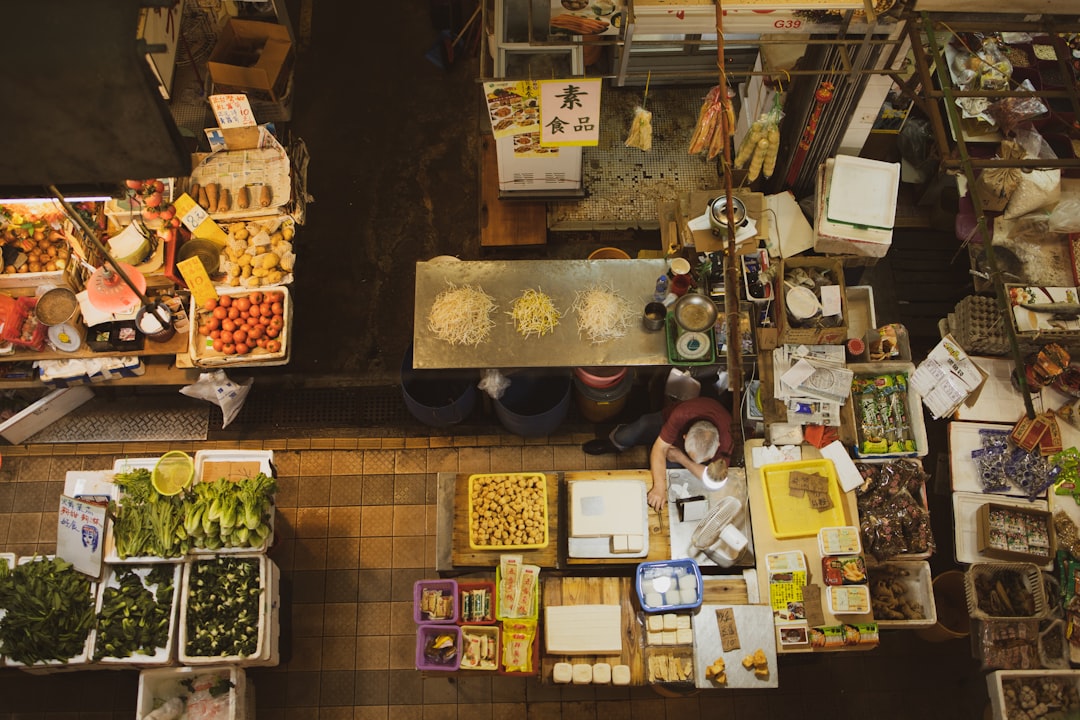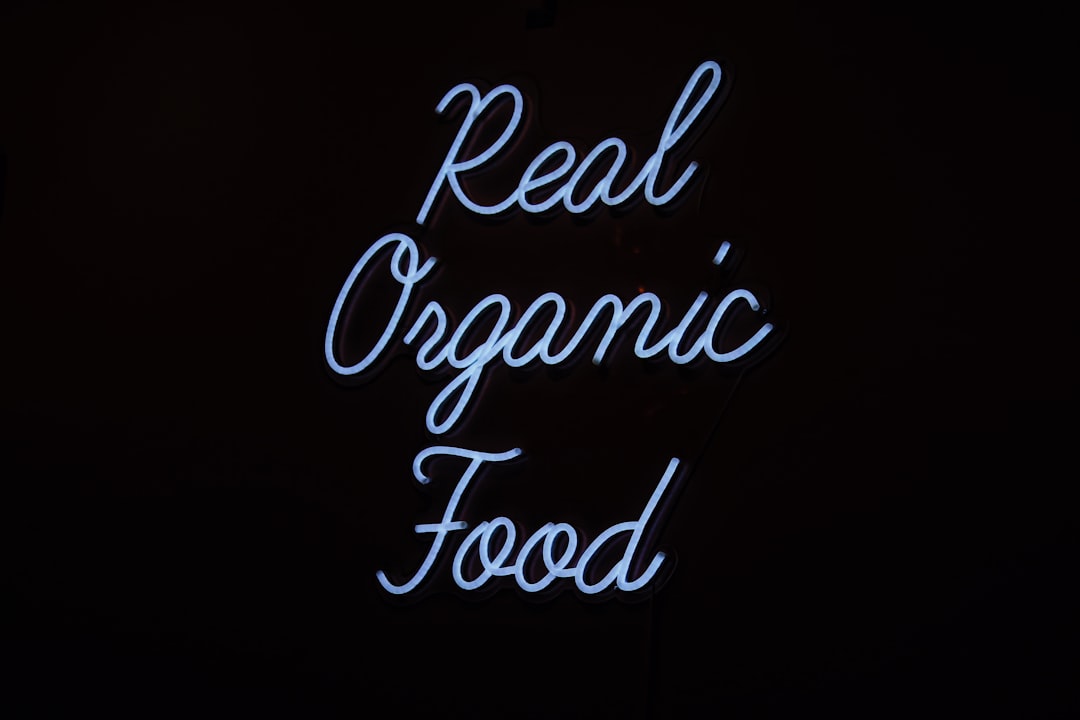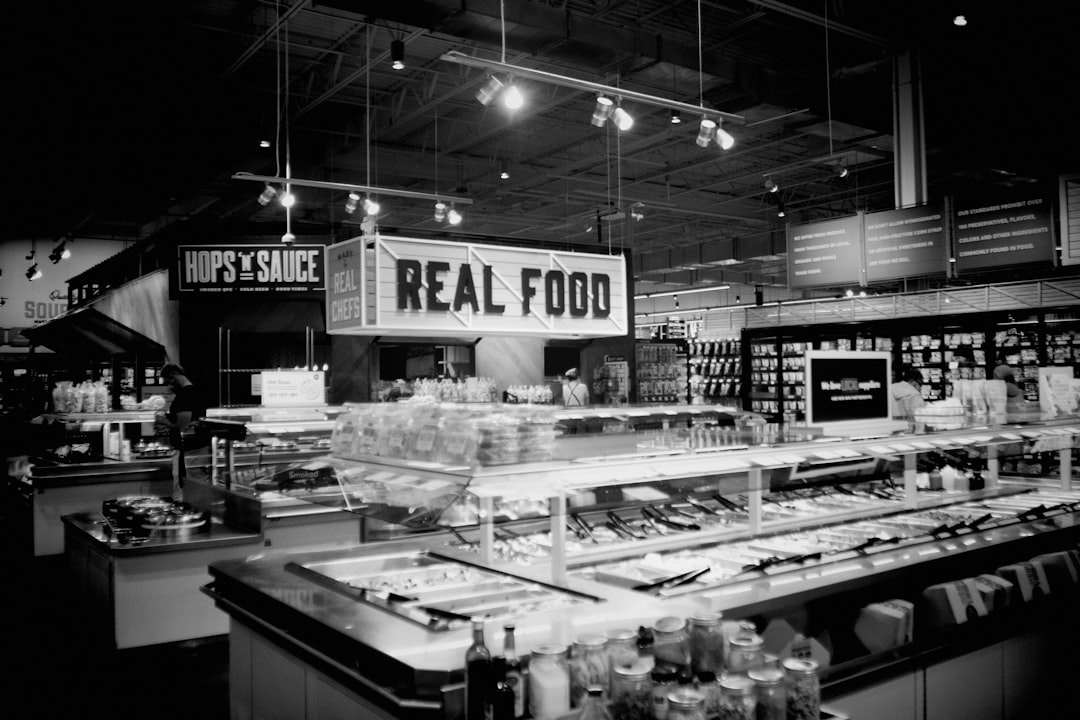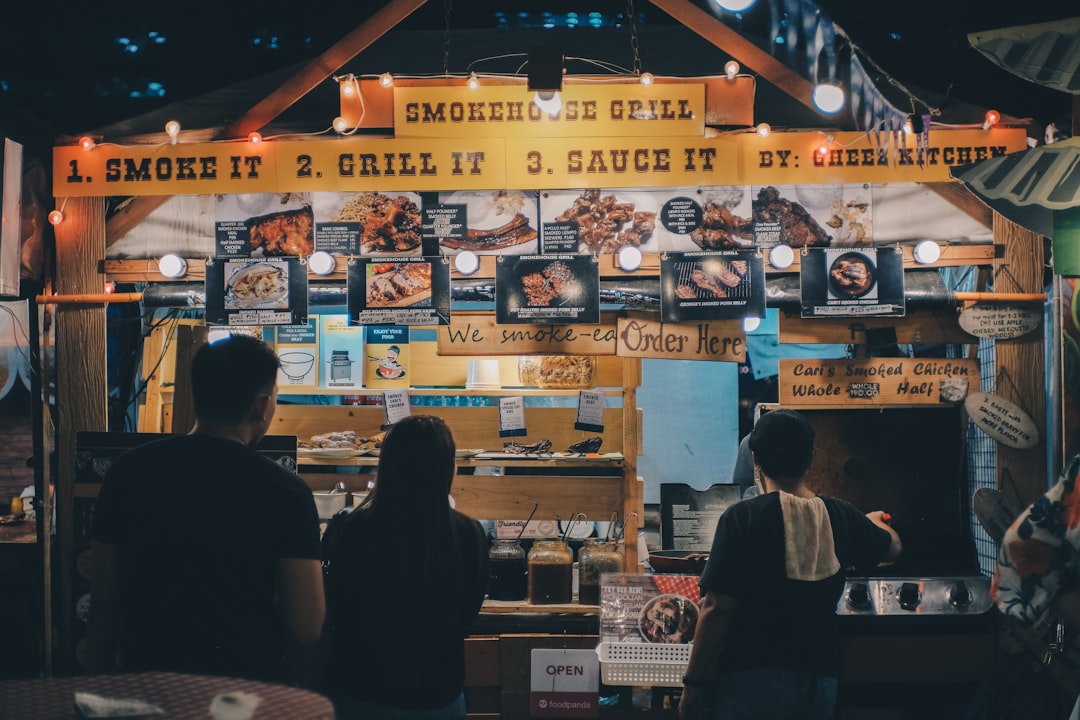

Engage prospects with a scan and streamline customer engagement with FREE QR code marketing tools by Sona – no strings attached!
Create a Free QR CodeFree consultation

No commitment

Engage prospects with a scan and streamline customer engagement with FREE QR code marketing tools by Sona – no strings attached!
Create a Free QR CodeFree consultation

No commitment
QR codes have become a vital tool for food businesses, seamlessly connecting the offline world with digital actions. They offer a convenient, engaging, and efficient way to enhance both operations and customer experiences, with no need for app downloads or complex setups. Guests simply scan, act, and enjoy faster service, while your team gains a clear view of what works and where to improve. Read the US Foods report.
With the growing demand for speed and convenience in dining, takeout, and delivery, QR code ordering removes outdated processes such as waiting in line, handling physical menus, and manual order taking. This shift to self-service improves throughput and order accuracy while creating clean, consistent data at every touchpoint. Better data means stronger marketing, fewer missed opportunities, and measurable return on investment across channels.
This guide covers practical steps, use cases, and key innovations that food businesses use to speed up ordering with QR codes. You will learn how to enhance guest experiences, build scalable campaigns for acquisition and retention, and overcome obstacles such as incomplete data, inconsistent messaging, and limited insight into customer behavior. Whether you operate a cafe, food truck, or multi-location quick-serve brand, these strategies will help you modernize ordering and grow faster with less friction. For context on innovation, see restaurant marketing trends.

QR codes bridge the gap between physical touchpoints and digital outcomes, which makes them ideal for speeding up ordering, improving throughput, and increasing engagement. Instead of handing out printed menus, taking orders by hand, and reconciling payments at the counter, you can guide guests to scan and complete every step on their own device. This reduces back-and-forth, minimizes errors, and shortens the time between arrival and fulfillment.
Consider the analog workflows that slow service: paper menus that need reprinting when items change, staff juggling lines and phone orders, and paper sign-up sheets for loyalty that rarely get entered correctly. A QR-first flow replaces these with dynamic menus, digital order and pay, and automated profile capture. The result is faster table turns, fewer bottlenecks during rush periods, and a consistent digital trail of interactions that powers smarter marketing.
With a self-service flow that begins at the first scan, you can capture preferences, payment details, and contact permissions without manual work. This accelerates ordering today and creates a foundation for personalized marketing tomorrow.

Food service is increasingly shaped by speed, simplicity, and convenience. Customers expect to act instantly, and operators need to keep operations lean while maintaining accuracy and quality. QR codes enable the modern behaviors guests already prefer, while giving operators the data and flexibility to adapt quickly.
They also turn passive assets into active channels. Menus, decals, window signs, and receipts no longer end at awareness. Each becomes an entry point to ordering, loyalty, feedback, or reservations. This shift from static to interactive materials improves both guest experience and measurement, which helps you grow with confidence rather than guesswork. For broader strategy, explore QR marketing.
From appointment cards in a reservation-only chef’s table to window clings on a food truck, QR codes make your print assets measurable and actionable. You move beyond guesswork to precise, data-informed improvements.

Food businesses benefit from several QR code formats, each aligning to a specific action. Choosing the right type for each use case reduces friction and boosts conversions. Static codes are useful for unchanging information, while dynamic codes enable edits, tracking, and branching logic without reprinting.
Web links are the most common, since they route directly to online menus, checkout pages, and promotional landing pages. But other formats can accelerate everyday tasks. Wi-Fi access codes reduce staff interruption, SMS and email formats streamline support requests, and app download codes are useful when you want to grow repeat ordering through your mobile app.
Dynamic QR codes through Sona QR allow you to edit destinations instantly, attach UTM parameters for analytics, run A or B variants for testing, and track scans by placement and location. This flexibility saves time and ensures your campaigns stay current and effective.

The most effective QR campaigns meet guests where they already are. Think through the journey from first impression to loyal repeat and add QR entry points at each moment where friction slows the experience. In-store signage and food packaging are consistent winners, but do not overlook off-premise placements like delivery seals and community flyers.
Each touchpoint can accomplish a specific goal. Tables enable scan-to-order for dine-in. Counter displays capture opt-ins from guests who pay in person. Delivery bags prompt reviews or reorders. Window signage converts passersby into waitlist signups or online orders. When you map placements to goals, you ensure every scan has a clear next step, including storefront signage that captures nearby intent.
When you evaluate these placements, consider visibility, lighting, distance, and dwell time. High-contrast art, clear CTAs, and scannable sizes improve performance and reduce guest confusion.

QR codes serve several high-impact use cases in food service. The most valuable focus on speeding up ordering, improving accuracy, and increasing repeat visits. By aligning each use case to a goal, you can test impact and scale what works.
For many operators, three use cases consistently deliver results: instant ordering with digital menus, fast loyalty enrollment, and streamlined customer feedback collection. Each is simple for guests and powerful for your team, because they replace analog steps with clean digital data.
Beyond these, you can power reservations and waitlist signups, catering inquiries, allergen and nutrition lookup, and contactless pay-at-table. Each of these supports speed and clarity, which keeps guests happy and staff focused on hospitality.
Every scan is a signal. It reveals context such as where the guest was, what they were trying to do, and when they took action. When you deploy multiple QR codes across dine-in, takeout, and delivery, you can segment audiences automatically and tailor your follow-ups with precision.
Segmentation is especially powerful in food businesses because intent is often time-bound and location-specific. A scan at a lunch table differs from a scan on a delivery label. A weekend late-night scan suggests different preferences than a weekday morning scan. With dynamic codes and the right integrations, you can capture these distinctions and turn them into higher-performing marketing. For campaign tactics, use Sona’s playbook intent retargeting.
This approach turns real-world interactions into permission-based conversations. Instead of blasting generic promotions, you deliver relevant offers that respect context and increase the likelihood of conversion.
QR codes act as connectors across offline and digital channels, which makes them ideal for multi-location food businesses that rely on print materials and in-store signage. By using consistent codes, UTMs, and dynamic destinations, you can unify messaging and measurement across every medium.
Start by mapping your core channels and defining the role of QR codes in each. The goal is to reduce friction from awareness to order, while capturing data that informs your next campaign. With a centralized platform like Sona QR, you can manage codes, monitor performance, and pipe data to your CRM for automated workflows.
A unified QR strategy ensures that every channel pushes toward the same goals: faster ordering, higher repeat visits, and better data. You remove blind spots and build a scalable playbook for growth.
A clear process will help you launch faster and optimize with confidence. Treat QR deployment like any other performance channel: start with a goal, design for the environment, test, and iterate with data.
The steps below are tailored to food businesses. You can start small with a single use case such as scan-to-order at tables, then expand to packaging, windows, and direct mail once you have proven results.
Define exactly what you want the QR code to accomplish and how it supports your business goals. Common examples include scan-to-order for dine-in, scan-to-pay at the table, or scan-to-join loyalty on takeout packaging. Be specific about the outcome you want to measure such as reduction in order time or loyalty signups per day.
Choose between static and dynamic codes. For any campaign that needs tracking, personalization, or future editing, dynamic codes through Sona QR are the best choice. Static codes work for unchanging information such as a permanent Wi-Fi password.
Design for scanning in the real world. Size, contrast, and placement matter. Include a clear CTA that tells guests what they get when they scan. Test across devices, lighting, and distances to ensure a smooth experience before you print at scale.
Place QR codes where they will have maximum visibility and relevance. Start with table tents for dine-in ordering, counter signs for scan-to-pay or skip-the-line, and packaging for loyalty and feedback.
Use analytics to connect scans to outcomes. Monitor which placements drive the most orders and where guests drop off. Run A or B tests on CTAs, code sizes, and landing pages. Iterate quickly to compound gains across locations.
Tracking is the backbone of an effective QR strategy. Knowing that someone scanned a code is helpful, but it is only the start. To prove ROI, you need to connect each scan to downstream actions such as add-to-cart, order submitted, payment accepted, and repeat visit. Sona is an AI-powered marketing platform that turns first-party data into revenue through automated attribution, data activation, and workflow orchestration.
Set up tracking so that every QR placement can be measured in context. Use unique codes by location and asset, attach UTM parameters, and integrate with your POS and CRM. This creates a clear line from scan to revenue, and it uncovers insights such as which menu categories overperform at certain times or which stores benefit most from window signage.
Comprehensive tracking closes the gap between anonymous scans and known buyers. It equips marketing and operations with the insights needed to improve speed, staffing, and promotions in real time.
Once your initial QR deployments are live, expand strategically. Focus on placements that combine high visibility with clear guest value. Standardize your creative templates, CTAs, and analytics settings so that every new code slots into your measurement framework without extra work. For fresh tactics, browse marketing ideas.
Training matters as well. Staff should know how to introduce QR ordering and explain benefits in a sentence or two. This reduces confusion for first-time users and increases adoption during peak times. Small scripts and role-play during pre-shift meetings can make a meaningful difference.
Creative deployments keep momentum high. Coffee shops can print QR codes on loyalty cards that link to an instant join flow and a free upgrade on the next visit. Fast casual brands can include QR codes on napkin holders that tease seasonal items with an early access offer for scanners, supported by in-store table tents. Each idea converts idle moments into measurable engagement that feeds your growth engine.
QR codes are a transformational strategy for food businesses. They enable modern ordering, deeper engagement, and a competitive edge in a market defined by speed and convenience. By solving real pain points like missed customer opportunities, incomplete data, and fragmented journeys, QR ordering delivers faster service, stronger repeat visits, and actionable intelligence. Launch your first dynamic codes with Sona QR, connect scan data to your POS and CRM, and let every scan drive measurable growth and better customer experiences. Start creating QR codes for free.
QR codes have revolutionized food businesses by transforming the ordering process into a fast, seamless experience that delights customers and boosts operational efficiency. By enabling contactless menus and instant ordering at the table, QR codes accelerate service speed, reduce errors, and enhance customer satisfaction—all critical factors in today’s fast-paced dining environment. Imagine customers placing their orders effortlessly from their phones, freeing up staff to focus on delivering exceptional service and turning tables faster.
With Sona QR, food businesses gain the power to create dynamic, trackable QR codes that can be updated instantly without reprinting, providing real-time insights into customer behavior and order patterns. This means you can optimize your menu, personalize promotions, and directly connect every scan to increased revenue. Start for free with Sona QR today and transform your ordering process into a competitive advantage that drives growth and customer loyalty.
QR codes offer a convenient and efficient way for guests to scan, order, and pay from their own devices, resulting in faster service, reduced errors, and a seamless dining experience without the need for app downloads.
Place QR codes at eye level with clear calls to action like Scan to order now, use dynamic codes for easy updates, deploy across tables, counters, and windows, and provide short instructions for first-time users to maximize visibility and engagement.
QR codes replace analog workflows like paper menus and manual order taking with digital ordering and payment flows that reduce staff workload, minimize errors, speed up order fulfillment, and generate consistent data for smarter marketing.
Add QR codes to pizza boxes, salad bowls, coffee sleeves, and delivery bags to encourage feedback, offer reorder discounts, invite loyalty signups, or prompt reviews, turning packaging into interactive marketing tools.
Use QR codes to enable instant ordering, fast loyalty program enrollment with rewards, and streamlined feedback collection, while leveraging scan data to segment audiences, trigger personalized follow-ups, and run targeted marketing campaigns.
Use Sona QR's trackable codes to improve customer acquisition and engagement today.
Create Your FREE Trackable QR Code in SecondsJoin results-focused teams combining Sona Platform automation with advanced Google Ads strategies to scale lead generation

Connect your existing CRM

Free Account Enrichment

No setup fees
No commitment required

Free consultation

Get a custom Google Ads roadmap for your business






Launch campaigns that generate qualified leads in 30 days or less.
